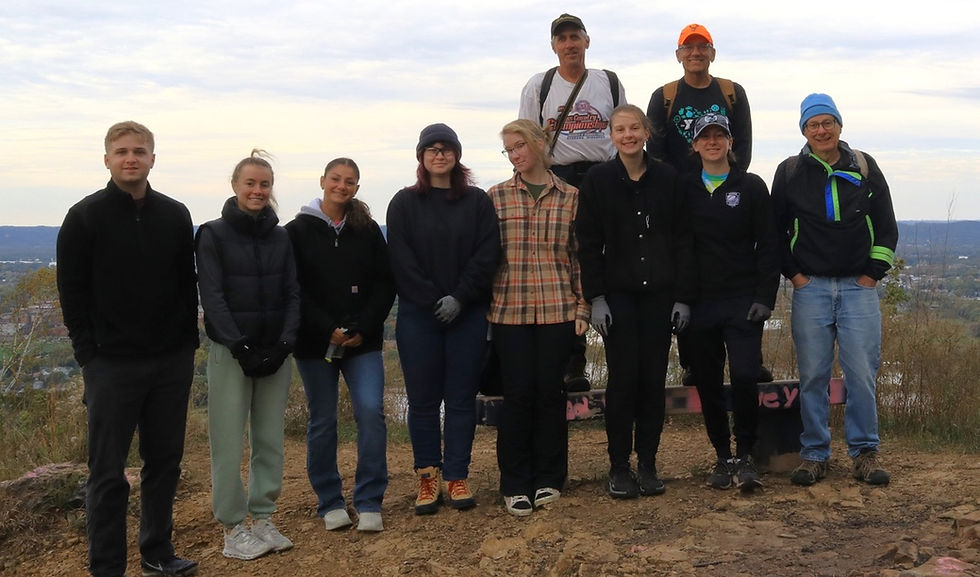Plant of the Week #15- Purple Prairie Clover
- jonathanrigden
- Aug 5, 2024
- 1 min read
The plant highlighted this week is the purple prairie clover, also known as Dalea pupurea. This species is commonly found throughout the central region of North America, spanning from Texas to Canada. While many plants have already finished blooming, there are still numerous specimens that can be appreciated, such as this lovely group observed on Zoerb Prairie on July 28th:
Note that most of the spikes are blooming near the top. This indicates that they are reaching the end of their blooming cycle since the flowers open first at the base and progress up to the tip. The plant also has an odd number of leaflets, most often 5 but anywhere from 3 to 7, on each leaf. It is of the legumes that grow on the prairie which add nitrogen to the soil.
The nectar of this plant attracts a long list of insects according to Illinois Wildflowers: https://www.illinoiswildflowers.info/prairie/plantx/ppr_cloverx.htm . Note that this website also says that this plant "tillers" meaning that additional shoots arise from the base of a plant that grows from seed forming tufts with multiple shoots. The term is most often used to describe grasses.
Purple prairie clover is also valuable as forage due to its high nutritional value and its seeds are consumed by many birds and small mammals. A description from Michigan State University says that the seeds of this plant can grow after as much as a hundred years of dormancy. https://art.msu.edu/purple-prairie-clover-dalea-purpurea/
“To make a prairie it takes a clover and one bee, One clover, and a bee, And revery. The revery alone will do, If bees are few”
-Emily Dickinson






Comments